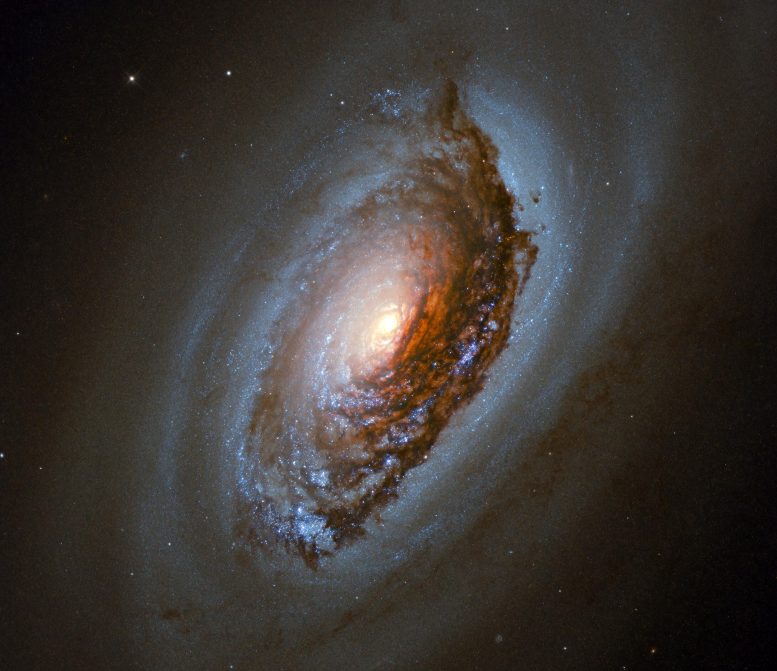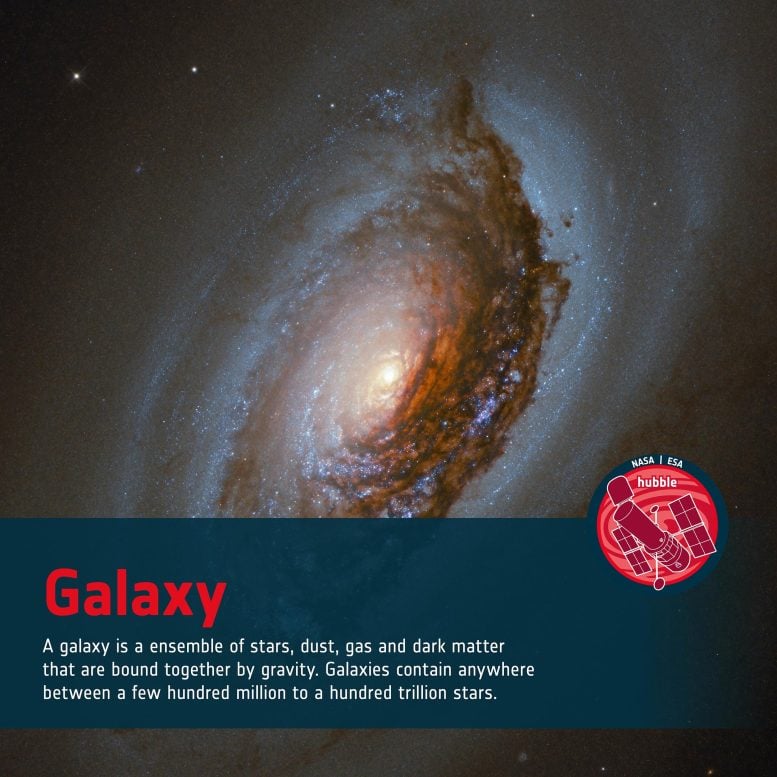
What Is a Galaxy?
A galaxy is a collection of stars, dust, gas, and dark matter held together by gravity. Galaxies contain anywhere from a few hundred million to a hundred trillion stars.
Galaxies are collections of stars, dust, gas, and dark matter, which are bound together by the gravitational attraction that results from their own mass. A small dwarf galaxy contains a few million stars, while the largest known galaxies can contain up to a hundred trillion stars.
There are many different galaxy morphologies, including elliptical galaxies and spiral galaxies. Many galaxies, including the Milky Way, have supermassive black holes at their centers. If the black hole is active, then the galaxy’s active core is classified as an active galactic nucleus (AGN). Galaxies are highly dynamic, evolving considerably throughout their lifetimes and interacting with one another.
As they are so large and bright, it is possible to study galaxies that are extremely far away — galaxies more than 13 billion light-years distant from Earth have been observed. The speed of light is finite, meaning that, for example, if a galaxy 13 billion light-years away is observed, it is seen how it was 13 billion years ago. This makes the study of galaxies a fascinating opportunity to study ‘fossils’ from the history of the Universe, thus providing clues to how the Universe has evolved over time.
A galaxy is an ensemble of stars, dust, gas, and dark matter that are bound together by gravity. Galaxies contain anywhere between a few hundred million to a hundred trillion stars. Credit: ESA/Hubble, ESA, NASA & L. Calçada
One of the main scientific justifications for building Hubble was to measure the size and age of the Universe and test theories about its origin. Using Hubble, astronomers were able to study young galaxies in the early Universe and the most distant primeval galaxies.
Hubble has imaged and studied galaxies of all kinds, including elliptical, spiral, and irregular galaxies, and of various different sizes, including dwarf galaxies. In this image of Messier 60 and NGC 4647, Hubble has imaged both an elliptical and a spiral galaxy, allowing for a clear comparison of the two galaxy types. Elliptical galaxies, the yellow fuzzy objects seen in the image, are most often found close to the centers of galaxy clusters, while spirals, the bluish patches, are usually found further out and more isolated.

Hubble has also observed beautiful, rare galaxy merging events, during which galaxies undergo dramatic changes in their appearance and in their stellar content. These systems are excellent laboratories in which to trace the formation of star clusters under extreme physical conditions.
Some of Hubble’s most popular images have been of galaxies. You can explore the vast ESA/Hubble archive of more than 1500 galaxy images here.
3 Comments
… “Galaxies are collections of stars, dust, gas, and dark matter, which are bound together by the gravitational attraction that results from their own mass. A small dwarf galaxy contains a few million stars, whilst the largest known galaxies can contain up to a hundred trillion stars.”
Now, it gets me thinking> if all of the material collapses, from one volume of the space and it starts spinning, then those neighbouring volumes would have some borders which could spin in the same direction and in opposite directions… it is just an idea… nothing else… no explanation for a dark matter there…
While everyone is focused on supermassive Black Holes at the centers of galaxies, another possibility exists. According to String Theory, a brane (dimensional membrane) surrounds our universe. What if such branes, rather than Black Holes, are also the centers of galaxies? Superheated gas would also form around branes, and they would explain how the matter in the universe became concentrated as galaxies even as the universe was, and still is, flying apart from the Big Bang at a rate that absolutely won’t allow any matter (quarks, even) to gravitationally attract each other to form anything. It would also explain those low-mass stars at the center of the Milky Way and the Andromeda galaxy, and other curious phenomena seen at those centers. How would we know if the center is a Black Hole or a brane? If material (gas, etc.) is seen swirling into the center, it’s a Black Hole. If material doesn’t swirl in, that would be support for a brane. The physical creation of brane-centered galaxies using the quantum foam and similar to Hawking radiation can be found by searching YouTube for “Creating Universes – A String Theory Way”
It’s really assumed but Who has made it very nicely that no error.